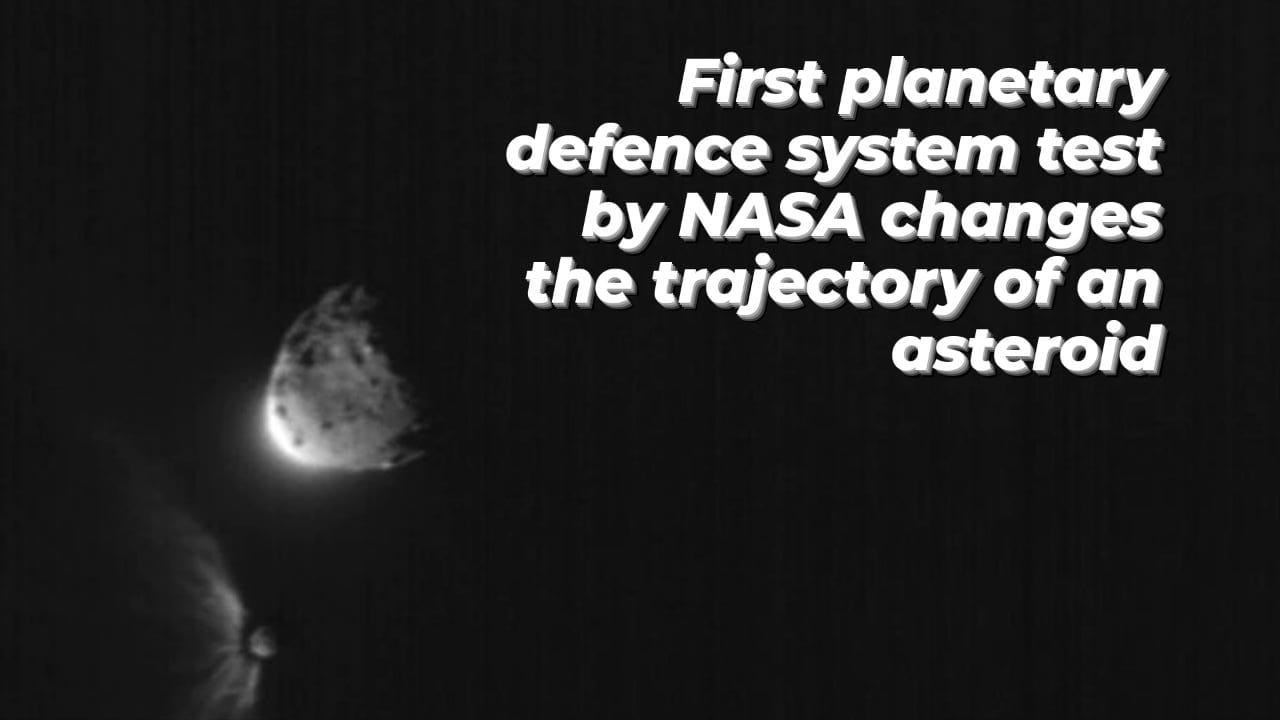
The rocky moonlet was successfully moved from its natural path into a faster orbit by the spacecraft NASA intentionally crashed into an asteroid last month, the U.S. space agency reported on Tuesday. This is the first time humanity has changed the motion of a celestial body.
The seven-year-long, $330 million proof-of-concept mission also marked the first ever testing of a planetary defence system intended to stop a doomsday meteorite impact with Earth.
The DART spacecraft’s suicide test flight on September 26 met its primary goal of reorienting an asteroid using just kinetic force, according to results of telescope views released at a NASA news briefing in Washington.
The target asteroid was moved 32 minutes closer to the larger parent asteroid it circles, according to astronomical data made during the previous two weeks, and its orbital period was also shortened.
NASA Administrator Bill Nelson told reporters that the findings marked ‘a watershed moment for planetary security and a watershed moment for civilization.’ Although this was not Hollywood, the plot felt like something from a movie.
The mission operations centre at the Johns Hopkins University Applied Physics Laboratory (APL) in Laurel, Maryland, where the spacecraft was created for NASA, was able to view the hit last month, which was 6.8 million miles (10.9 million kilometres) from Earth.

Post Your Comments